Africa is a continent rich in culture, history, and style—and traditional attire is one of the most powerful expressions of that identity. From bold patterns to detailed embroidery, each outfit tells a story about the tribe, region, or occasion it represents. Here are 25 of the most popular traditional African attires for men, highlighting their origins, cultural significance, and the pride they continue to inspire today.
Most Popular Traditional African Attires for Men
1. Shuka – Kenya and Tanzania
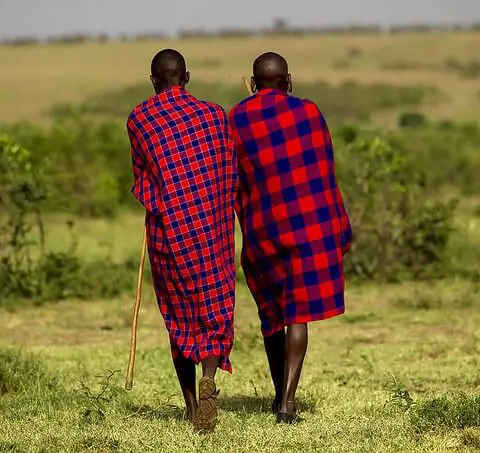
The Shuka is a distinctive cloth traditionally worn by the Maasai people of Kenya and Tanzania. Known for its bold red and black checkered patterns, it serves both cultural and practical purposes. Often referred to as the “African Blanket,” it protects against the harsh climate and symbolizes strength and community identity.
2. Agbada – Nigeria
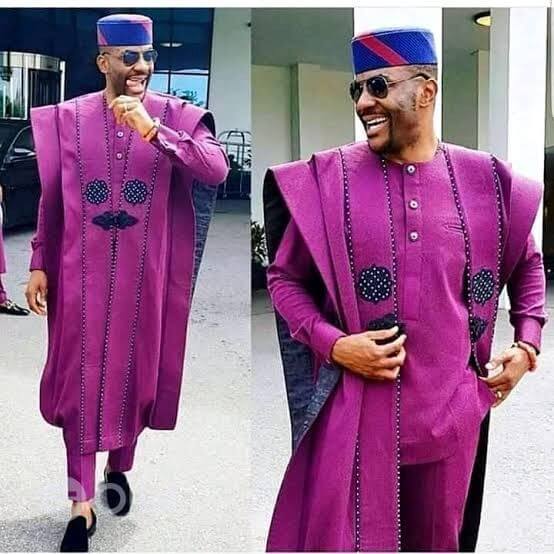
Agbada is a wide-sleeved, flowing robe commonly worn by men in Nigeria and other parts of West Africa. Worn over a matching tunic and trousers, it signifies wealth, elegance, and cultural sophistication, especially among the Yoruba people. It is a go-to attire for weddings, naming ceremonies, and important social events.
3. Boubou – Senegal and Mali
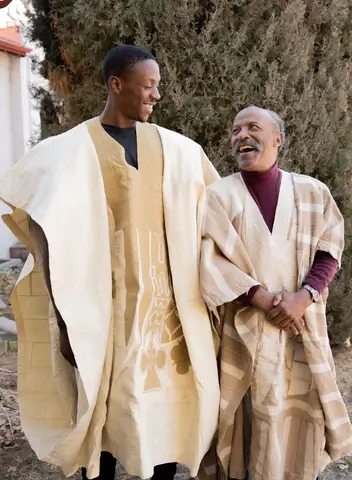
Originating in West Africa, the Boubou is a grand, flowing robe worn by men in countries like Senegal, Mali, and Guinea. Embroidered and layered, it is associated with nobility and tradition, especially among Muslim communities, and is often worn during Friday prayers and festive gatherings.
4. Dashiki – West Africa
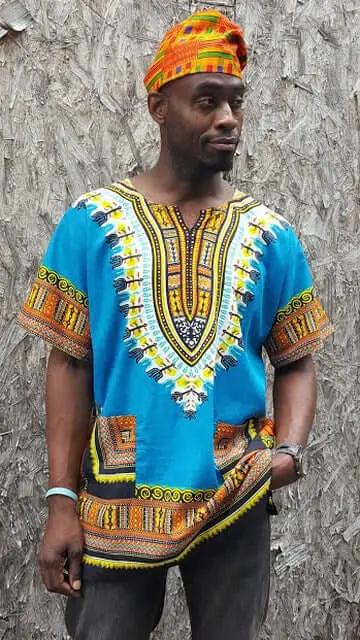
The Dashiki is a loose-fitting, colorful shirt that has come to represent African heritage and pride. Popular in West Africa and the African diaspora, its eye-catching patterns and V-shaped neckline make it a common choice for cultural celebrations, performances, and Pan-African unity events.
5. Kanzu – Uganda and Tanzania
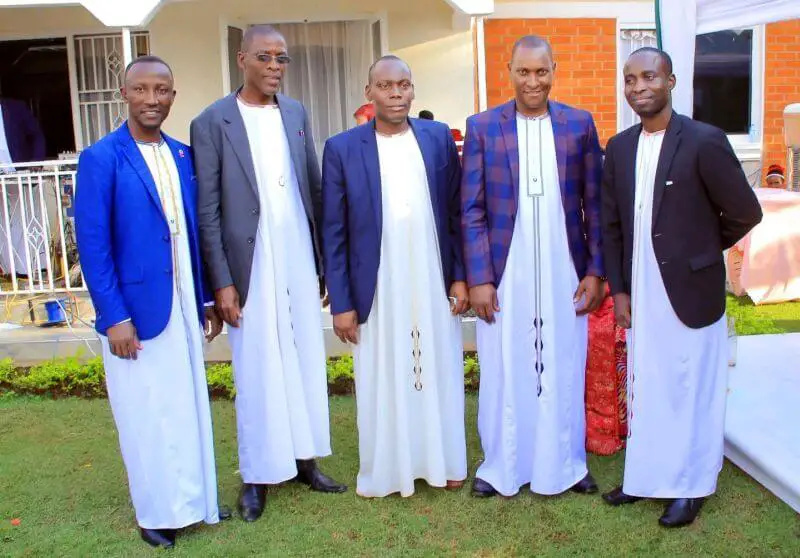
The Kanzu is a traditional tunic worn by men in Uganda, Tanzania, and other East African regions. Typically white or cream, it reaches the ankles and is often paired with a blazer or traditional coat during formal occasions like weddings and religious festivities.
6. Kente Cloth – Ghana
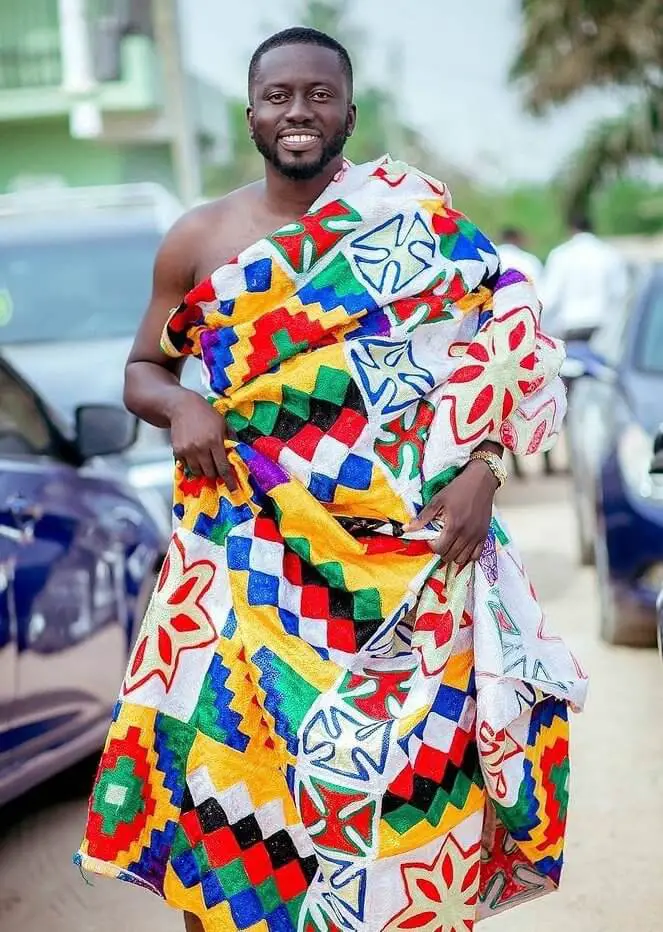
Kente is a handwoven textile with deep cultural roots among the Ashanti and Ewe people of Ghana. Each piece of cloth tells a story through its colors and patterns. Men usually drape it over one shoulder like a toga during high-status events, symbolizing pride, history, and identity.
7. Isiagu – Nigeria
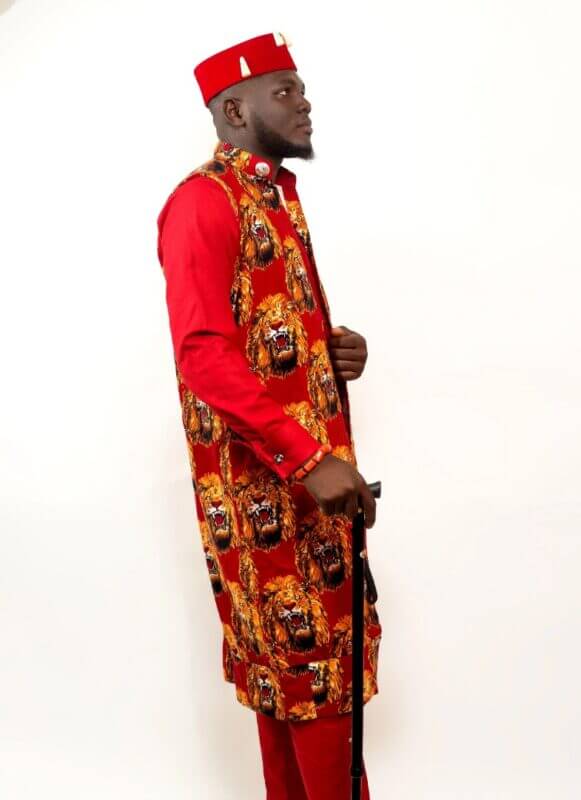
The Isiagu is a regal shirt adorned with lion-head motifs, traditionally worn by Igbo men in Nigeria. Often paired with a red cap and beads, it signifies prestige and authority. It’s commonly worn by titled men and elders at weddings, funerals, and community functions.
8. Babban Riga – Nigeria
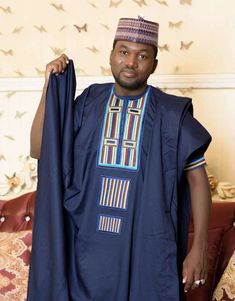
The Babban Riga is a voluminous robe worn by Hausa and Fulani men in Northern Nigeria and parts of the Sahel. This traditional attire reflects Islamic influence and is worn over a long tunic with trousers. It represents maturity, leadership, and social rank.
9. Jalabiya – Sudan and Egypt
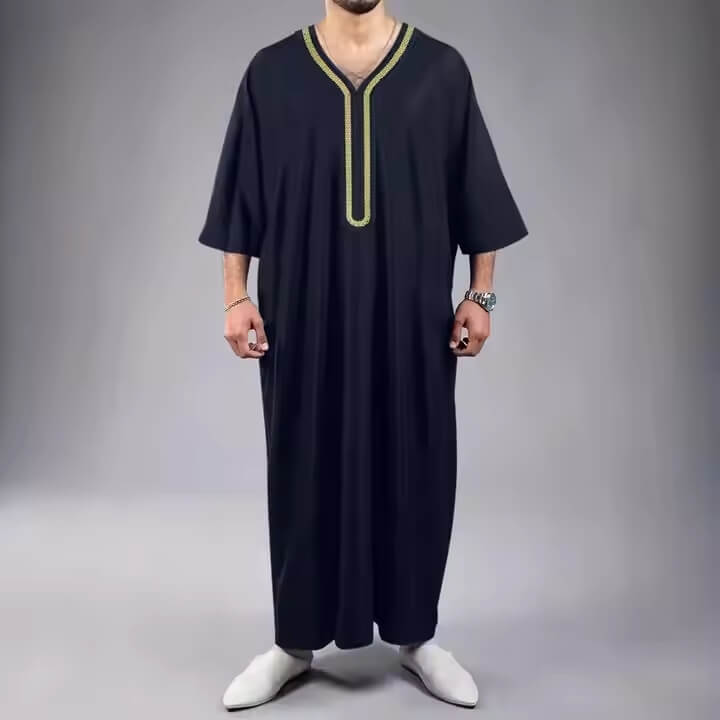
Jalabiya is a loose, flowing robe worn by men across North Africa, especially in Sudan and Egypt. It provides comfort in hot climates and is often styled with minimal embroidery for everyday use, or richly decorated for weddings and festivals.
10. Kitenge Shirt – Kenya and Tanzania
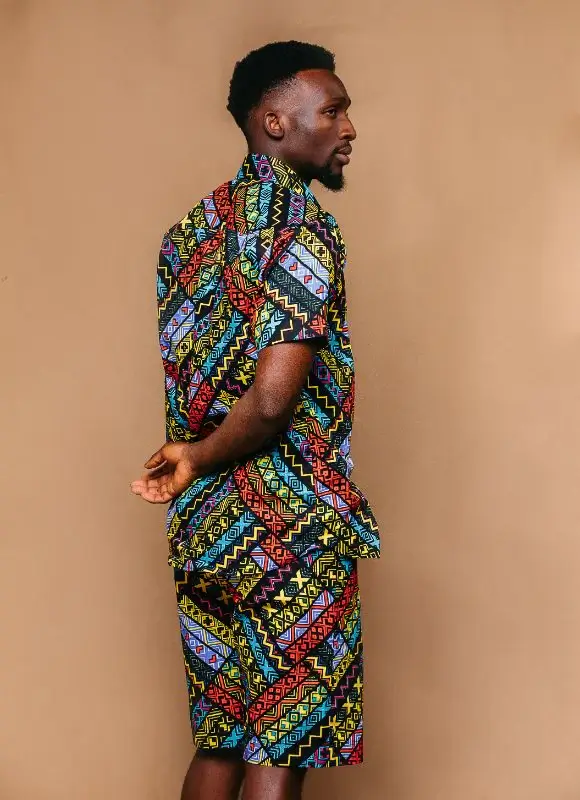
The Kitenge Shirt is crafted from vibrantly printed East African fabric known as Kitenge. Worn across Kenya, Tanzania, Rwanda, and beyond, it’s tailored in modern styles while maintaining traditional roots. The shirt is favored for both casual wear and formal gatherings due to its bold colors and cultural relevance.
11. Toghu/Atoghu – Cameroon

Toghu, also known as Atoghu, is a richly embroidered black velvet outfit traditionally worn by royalty and noble men in the North-West region of Cameroon, especially among the Bamileke and Tikar people. Once reserved for chiefs and kings, it is now proudly worn during cultural festivals, weddings, and state events.
12. Djellaba – Morocco and Algeria
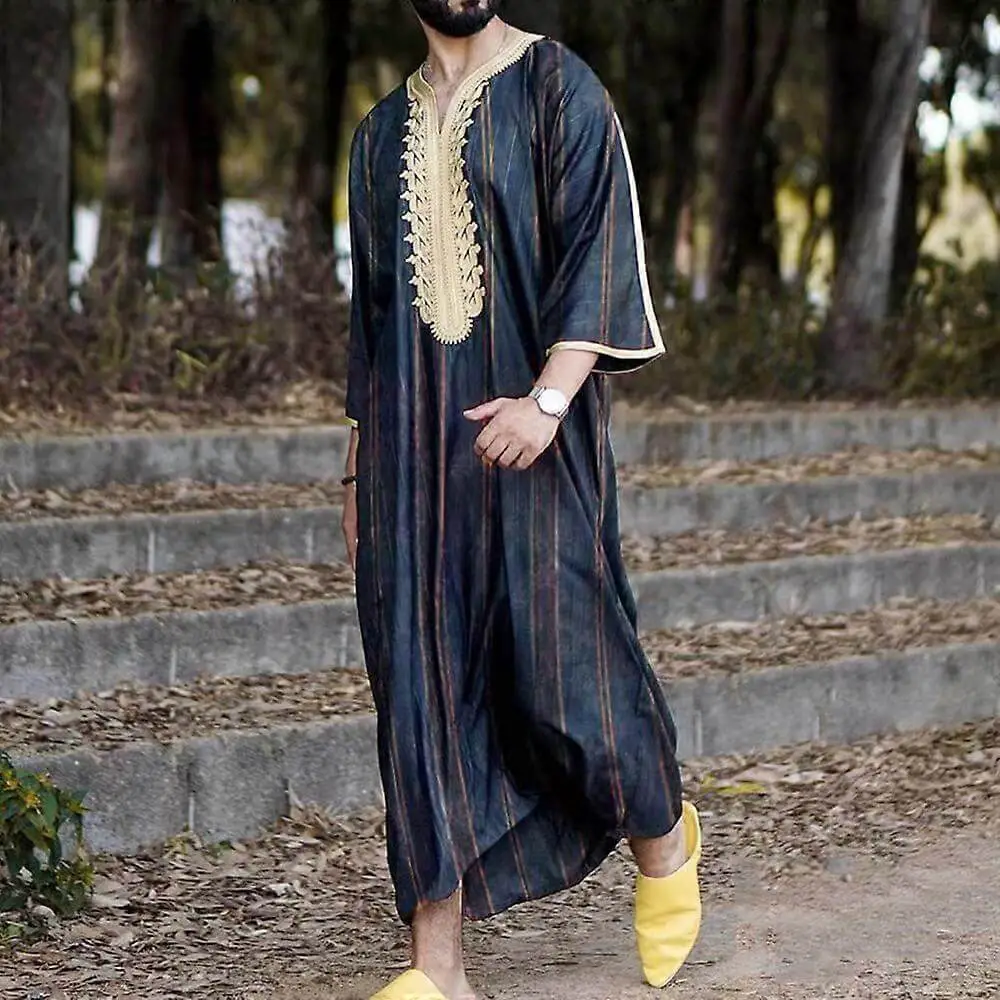
The Djellaba is a long, hooded robe with full sleeves traditionally worn by men in Morocco, Algeria, and other parts of North Africa. Made from wool or cotton depending on the season, it is worn for both daily life and religious observance, symbolizing modesty and cultural identity.
13. Gandoura – Algeria and Tunisia
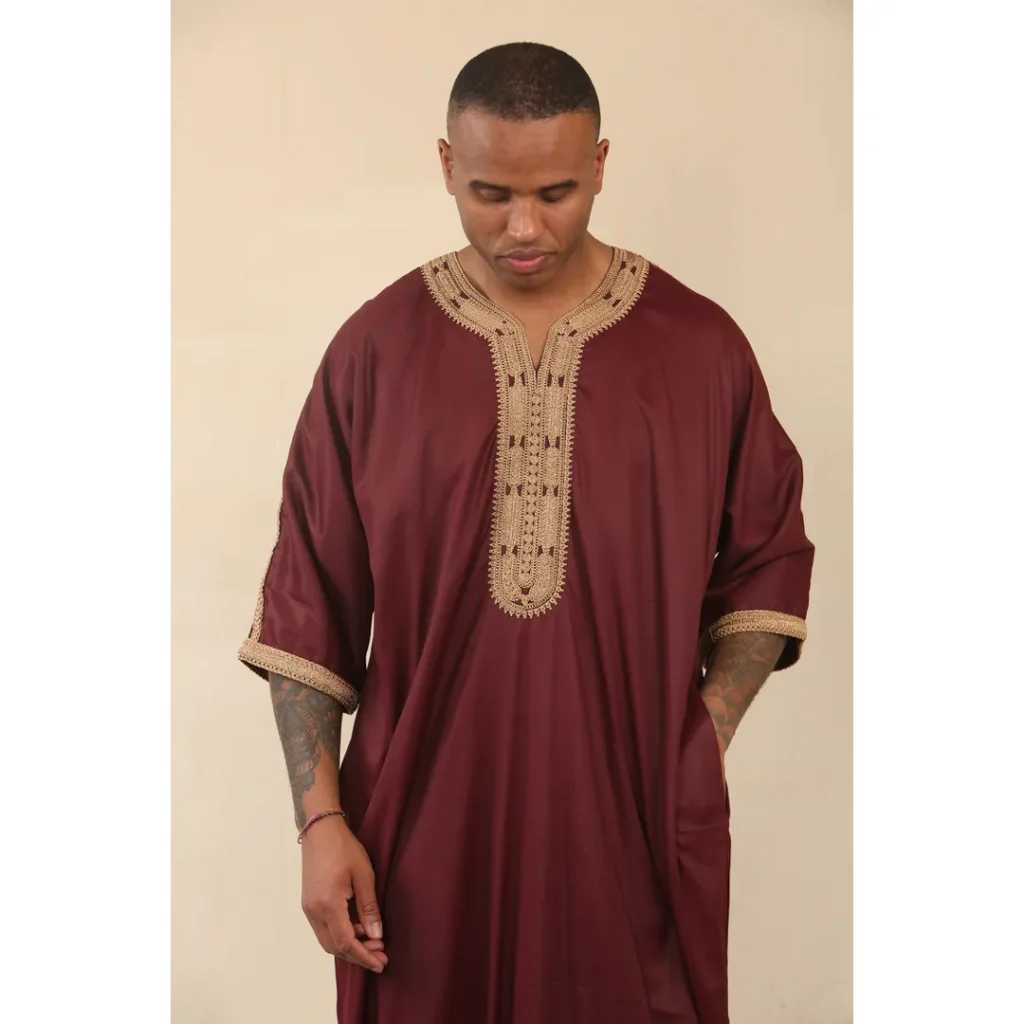
Gandoura is a sleeveless or short-sleeved traditional robe worn by men in Algeria and Tunisia. Simpler than the Djellaba, it is lightweight and perfect for hot climates. It is typically worn during family gatherings, Friday prayers, and festivals such as Eid.
14. Mushanana (male version) – Rwanda
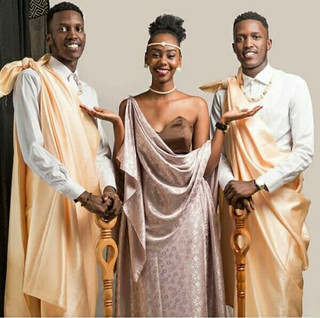
Though more commonly associated with women, men in Rwanda also wear a male version of the Mushanana during traditional ceremonies. It typically consists of a wrapped fabric worn over a shirt, symbolizing elegance and respect during weddings and national events.
15. Kikoi – Kenya and Tanzania
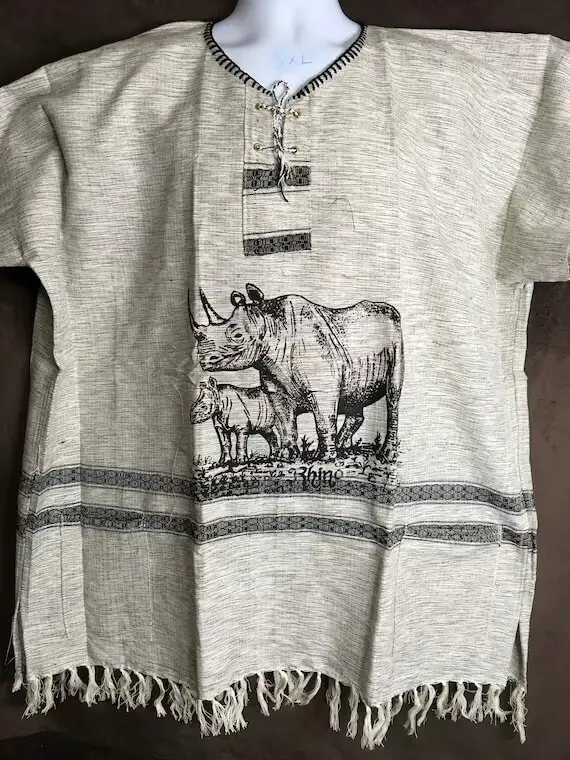
Kikoi is a rectangular piece of woven cotton fabric traditionally worn by men along the coastal regions of Kenya and Tanzania. It is typically wrapped around the waist like a sarong. Its bright colors and stripes make it ideal for everyday wear, especially in hot weather.
16. Fugu/Smock – Ghana
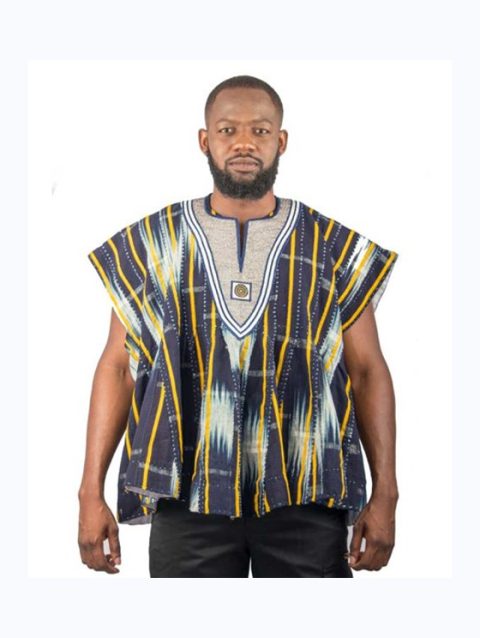
The Fugu, also known as Batakari or smock, is a handwoven tunic worn by men in Northern Ghana. Often made from thick cotton with bold stripes, it is a symbol of tradition and authority, commonly worn by chiefs, politicians, and during festivals and ceremonies.
17. Abacost – Democratic Republic of Congo
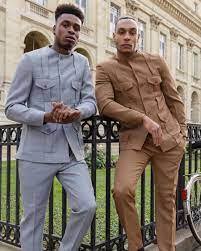
The Abacost, meaning “à bas le costume” (down with the suit), became a symbol of cultural independence in Congo under Mobutu Sese Seko. It’s a long or short-sleeved suit jacket worn without a tie, often styled with African fabrics, merging formality with national identity.
18. Ndebele Blanket Wrap – South Africa
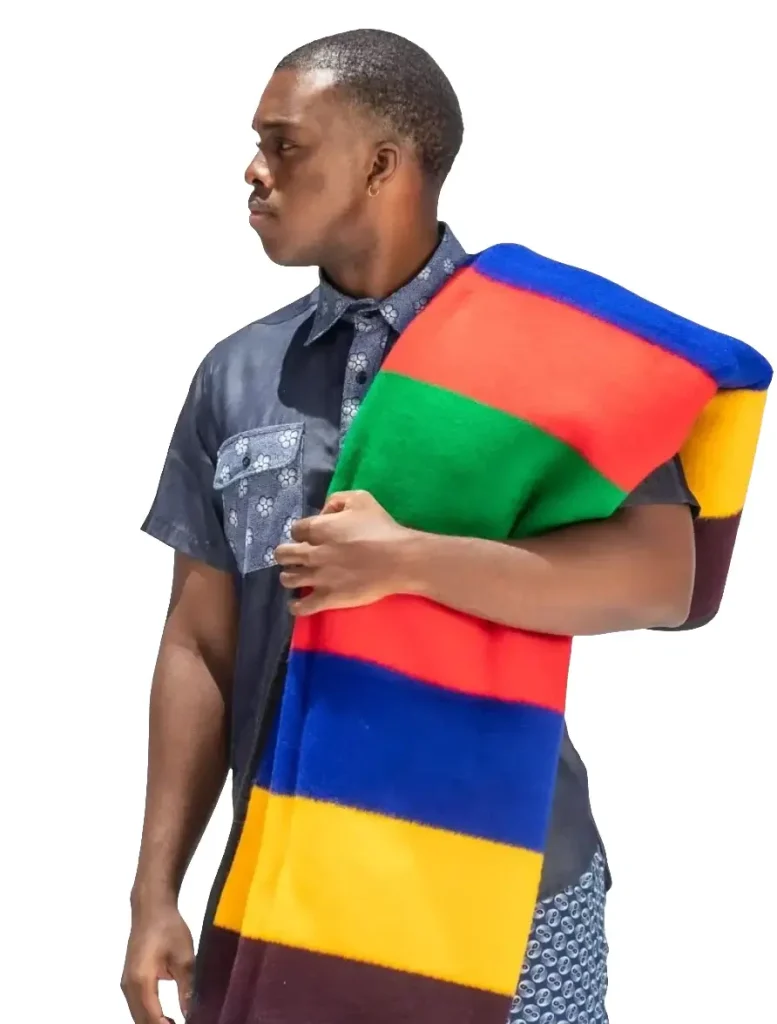
Among the Ndebele people of South Africa, men wear decorated blankets or cloaks with intricate beadwork and symbolic colors. These wraps are often paired with neck rings or armbands during rites of passage, expressing cultural pride and social status.
19. Lamba – Madagascar
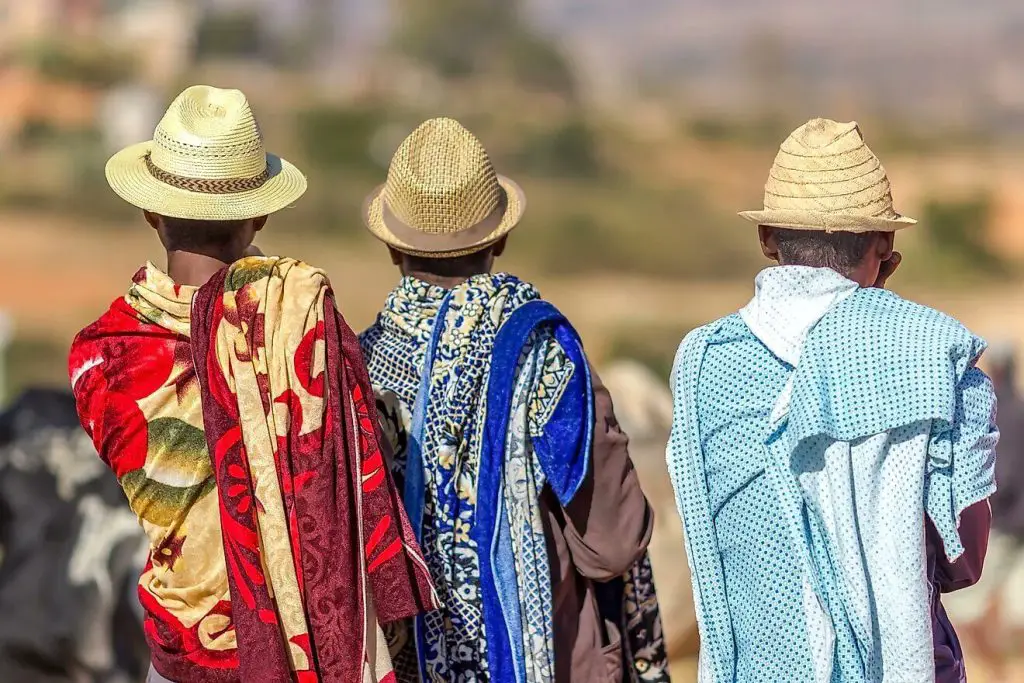
The Lamba is a large rectangular cloth worn by Malagasy men, especially in rural communities. Draped over the shoulder or wrapped around the waist, it serves as daily wear or is upgraded with embroidery for ceremonies, blending utility with tradition.
20. Basotho Blanket – Lesotho
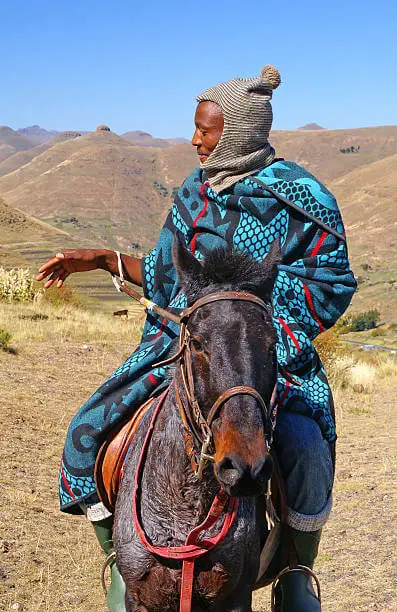
While typically known as a blanket, this iconic garment worn by men in Lesotho functions as both clothing and cultural symbol. Wrapped around the body, the Basotho Blanket features distinct patterns that signify status and are worn during ceremonies and daily life.
21. Kaftan – West Africa (Senegal, Nigeria, Mali)
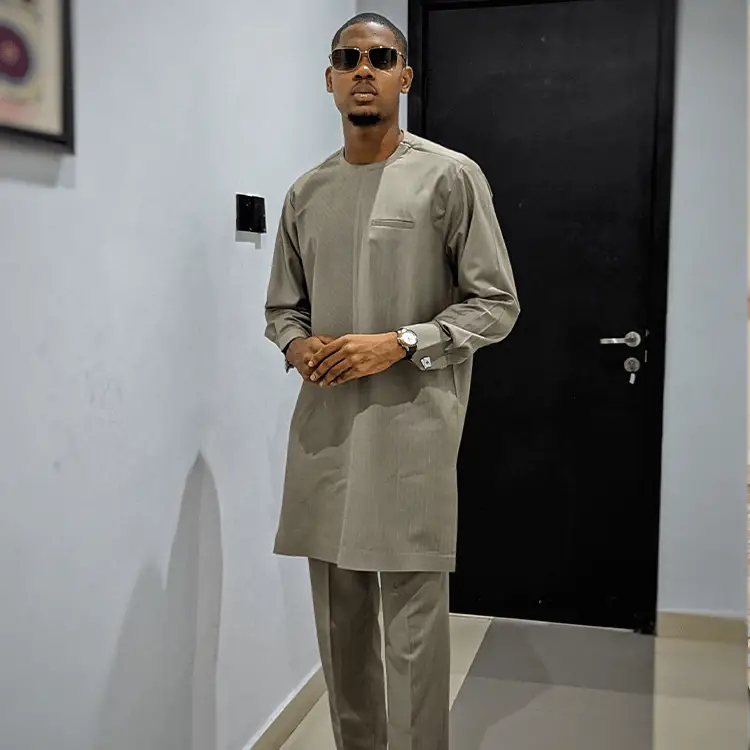
The Kaftan is a long, flowing robe made from lightweight fabric, often richly embroidered. Worn by men in Senegal, Nigeria, and Mali, it serves as formal attire during weddings, religious ceremonies, and festivals.
22. Bogolanfini (Mud Cloth) Shirt – Mali
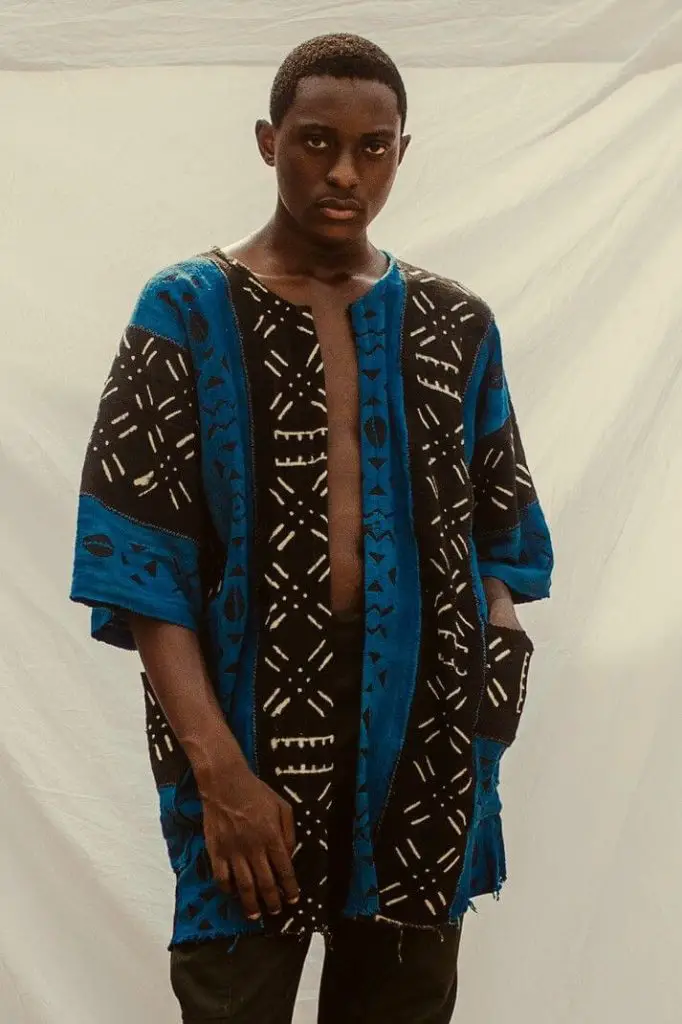
The Mud Cloth, or Bogolanfini, is handwoven and dyed with natural mud. Men wear shirts or robes made from this fabric during ceremonies and cultural festivals, symbolizing tradition and artistic expression.
23. Malian Faso Dan Fani – Burkina Faso
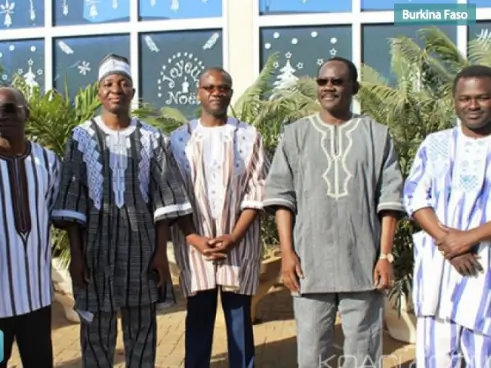
Faso Dan Fani is a handwoven cotton cloth from Burkina Faso, traditionally worn as a wrapper or shirt by men. It’s a symbol of national pride and is often worn during cultural festivals and important ceremonies.
24. Shweshwe Shirt – South Africa
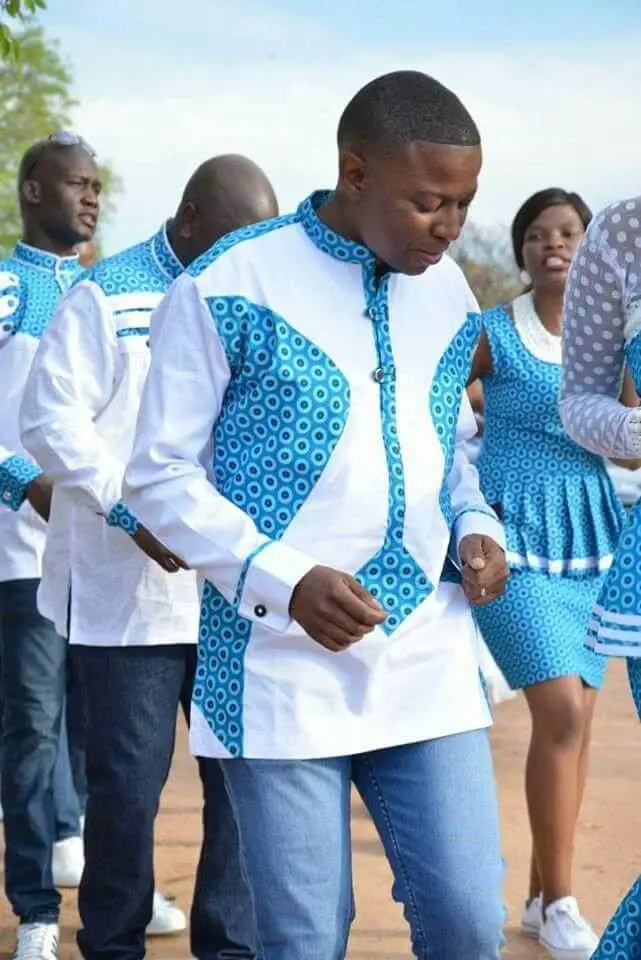
Shweshwe is a printed cotton fabric popular among South African men for shirts and casual attire. Known for its distinctive geometric patterns, it is worn both casually and at cultural events.
25. Tuareg Tagelmust – Sahara (Niger, Mali)
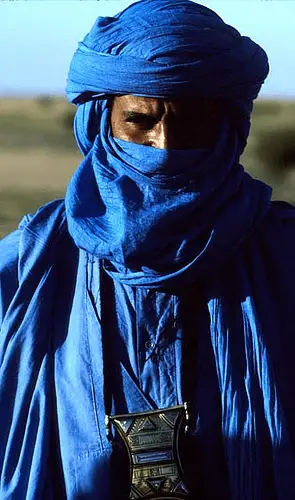
The Tagelmust is a long indigo-dyed turban worn by Tuareg men. It serves as protection from the desert sun and sand and is a strong symbol of identity.
Also check: 22 Most Popular Traditional African Attires for Women
